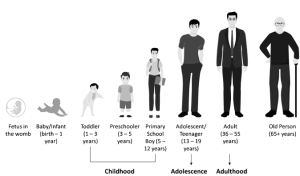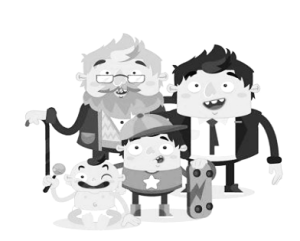We are born as newborns and steadily grow through phases before reaching maturity. These stages are termed a life cycle. A life cycle is defined as the stages of development that take place throughout the course of an organism’s existence. A life cycle terminates when an organism dies. In general, plants and animals go through three fundamental phases in their life cycles, starting as a fertilised egg or seed, evolving into an immature juvenile, and then eventually converting into an adult. During the adult stage, an organism will reproduce, giving rise to the following generation.
A life cycle might be made of more than the three basic phases depending on the species. For example, the human life cycle consists of 5 primary phases. The names of each stage might also change significantly based on the species. For example, a nymph is the name given to an immature juvenile dragonfly.
It is possible that an organism will spend different amounts of time at each stage. For example, one species of cicada can spend up to 17 years as an immature nymph before becoming a full adult. That is around the age at which we will graduate from high school! Cicadas achieve maturity when they are around 24 hours old and then they perish. Compared to other species, individuals spend a higher amount of their time in their adult form. Elephants, for example, reach adulthood at the age of 15 and go on to live for about 30 years after that as an adult.

Human Life Cycle
Foetus: Every person begins life as a foetus in their mother’s womb. A foetus develops in a liquid-filled womb and receives sustenance via a tube called the umbilical cord. When a woman carries a fetus, we refer to her as pregnant. Using an ultrasound scanner, doctors may photograph a foetus.
Baby: After approximately nine months (sometimes slightly longer; occasionally slightly less), the woman delivers birth. Between birth through around two years of age, we refer to a child as a baby (we count people’s ages starting on the day they are born). Babies are unable to care for themselves and must be fed (at first with milk, then with food) and have their diapers changed.
Child: Between the ages of three and 10, you are considered a ‘kid.’ Children are more independent than infants, and their independence increases as they grow older; for example, they can take food that is given to them and clothe themselves. Between the ages of three and five, children begin attending nursery and school.
Adolescent: According to the World Health Organization, an adolescent is a young person between the ages of 10 and 19. During this stage of the life cycle, puberty causes changes in the body. During this critical period, the brain develops at a faster rate. Adolescents are more self-sufficient than children; they can obtain employment and learn to drive at the age of seventeen. Adolescents, on the other hand, continue to live with their parents and rely on them to pay their bills!
Adulthood: Although the numbers eighteen and nineteen finish in ‘teen,’ individuals of this age are now considered adults. Between the ages of 18/19 and 39, the human body reaches its pinnacle of fitness and power. There is still some growth occurring, but not in terms of height. Adults often live alone in their own homes. The majority of people work full-time jobs to pay for their own food, bills, and other purchases. Adults can even have their own children!
Elderly: By the time they reach the age of roughly 67, the majority of individuals have worked diligently their entire lives and accumulated enough money to retire (stop working). Elderly folks are physically weaker and more easily fatigued than younger people. They may, however, have fun and remain active, as demonstrated by the pair in the photo. They will become grandparents if their children have children.

Every human being goes through the same life cycle. They are little in the beginning of their lives. They become larger and their bodies alter with time. When they reach adulthood, they frequently have their own children.
Conclusion
In summary, the human life cycle is divided into six distinct stages: fetus, infant, child, teenager, adult, and senior citizen. Although we characterise the human life cycle in phases, individuals evolve continuously and gradually during each of these stages.
 Profile
Profile Settings
Settings Refer your friends
Refer your friends Sign out
Sign out






